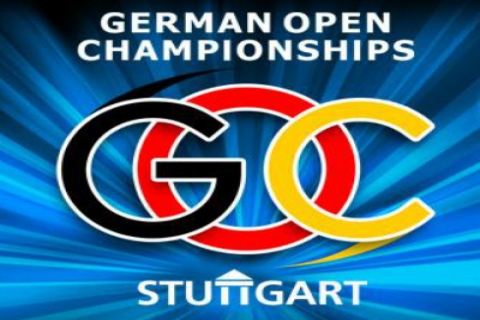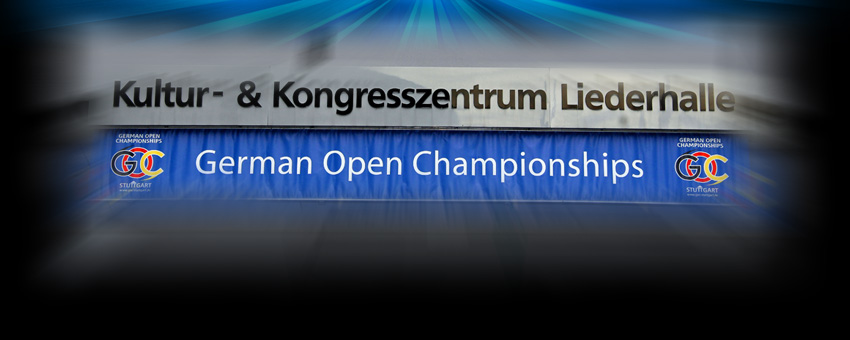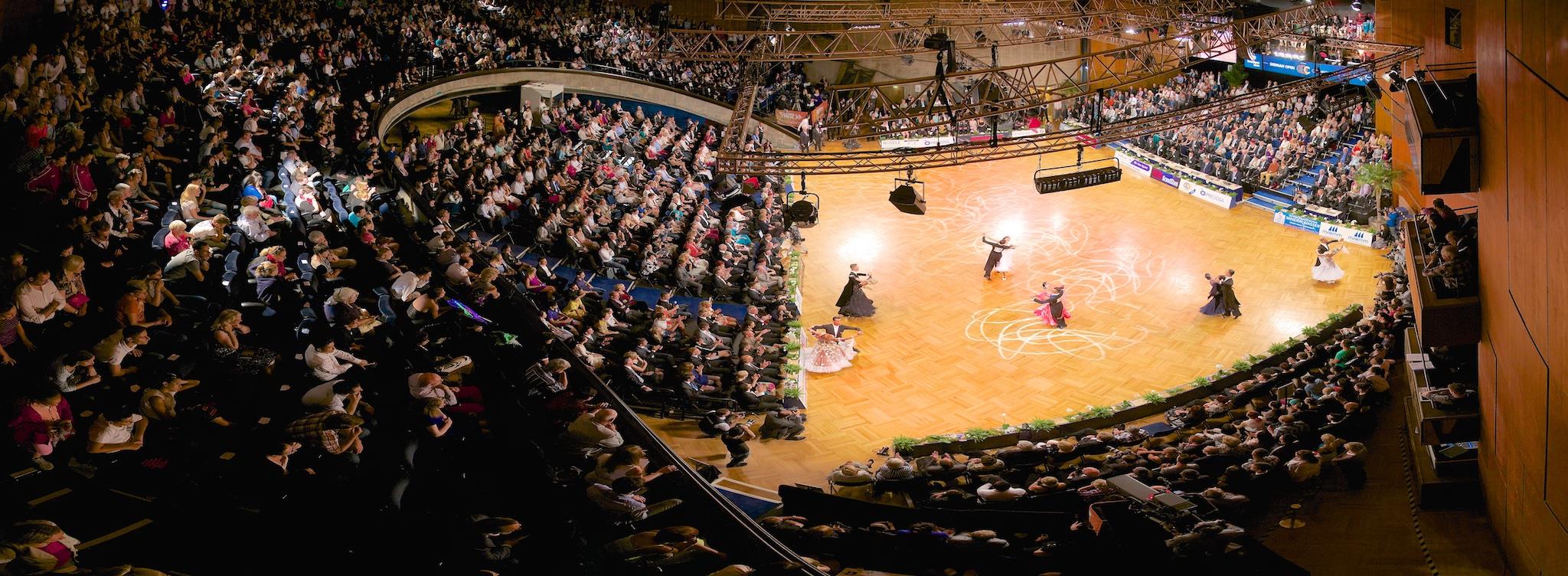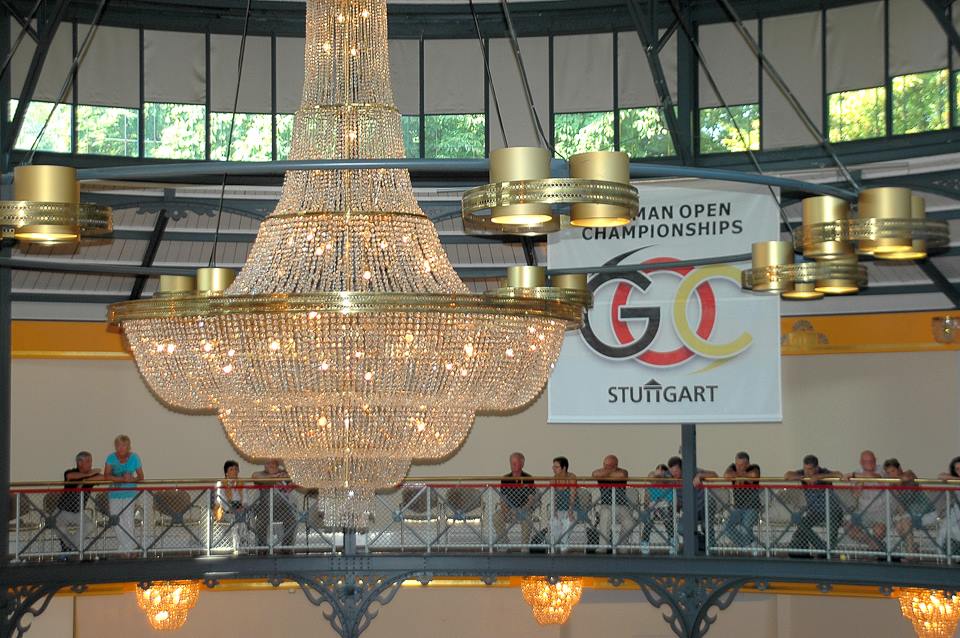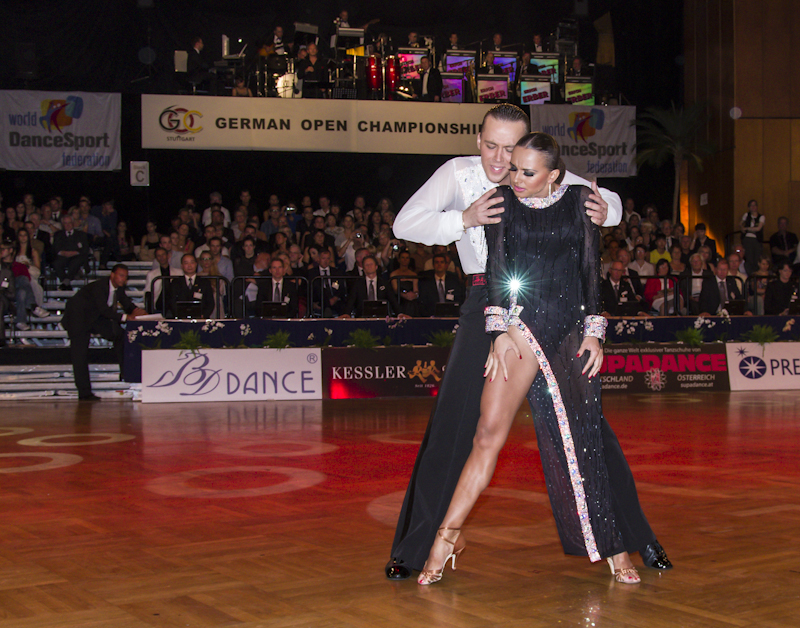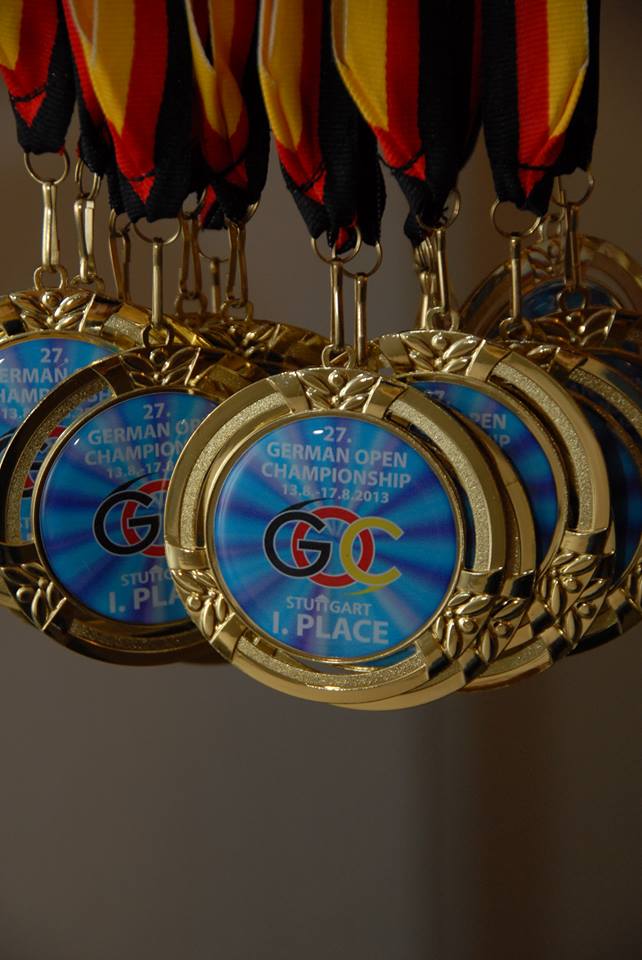German Open Championships (GOC)
See also: Categories: Ballroom Competition
Dates: Annually, second week of Augest
Location(s): "Kultur- & Kongresszentrum Liederhalle" & "Maritim Hotel" of Stuttgart, Germany
Years active: 1987 - Present
Founded by: Harry Körner , Alex Buttweiler
Definition
The History Of The German Open Championships
1984-1986
The Baden-Württemberg ballroom dancing coach Harry Körner had the idea of organising a similar tournament to the long-established event in Blackpool and soon found a partner in the President of the Mannheim club Alex Buttweiler. An unique tournament for Germany: amateurs and professionals from every class and age group all dancing at a single event. Körner is responsible for the links to the professionals whilst Buttweiler’s job is to take care of the local organisation. Werner J. Braun, the President of the “Baden-Württembergischen Tanzsportverbandes (TBW – the state ballroom dancing association)” was excited by the idea and put it forward to the “Deutschen Tanzsportverband” (DTV - the German Dancesport Association). The body initially authorised the event for one year.1987-1995
The 1st German Open Championships took place over the space of three days at the start of September in Mannheim’s “Rosengarten” venue. A non-trading company with Harry Körner as its main partner as well as the other partners the TC Blau-Gold Casino Mannheim dancing club (TC BGC) and the TBW are responsible for the event. The local organisation was taken on largely by the members of the TC BGC club. About 600 couples from Germany and the neighbouring countries competed in the first tournament. As the focus was on dancing as a sport, the event did not have a ballroom character. There are 12 competitions for amateurs and professionals (juniors, seniors, masters and formations) in the disciplines Latin and Standard. The close contact between dancers and spectators is appreciated by both sides and the DTV authorises the tournament for another three years.The 2nd GOC are brought forward to the middle of June. There is a small delegation from Russia competing for the first time.
Eastern block couples are now arriving en masse. Since the borders to the east were opened, the GOC has played a pioneering role for Russia and other eastern European countries. The GOC became the most important open tournament for couples from those nations because of its relative proximity. The new director of the Rosengarten Michel Maugé is obviously interested in the GOC and provides tips on how it can be developed.
The number of entries and participants have more than doubled since the start and the GOC is extended to four days. Along with Germany, the highest number of couples come from Russia. Eastern Europe leads the way as far as the juniors are concerned.
As suggested by the director of the Rosengarten Michel Maugé, the GOC award "La Danse" is launched. The first winners are the Norwegian standard professionals Lasse Ödegaard-Laila Krageböl. The dancing Oscar is designed to decorate couples not only for their competitve careers but also for their bonds to the GOC. The award was discontinued in 2004.
A limited company is now behind the GOC with the partners Harry Körner, TC Blau-Gold-Casino Mannheim, Tanzsportverband Baden-Württemberg, Deutscher Tanzsportverband and Deutscher Professionalverband (DPV – the German Professional Association).
1997-2003
The number of participating couples now exceeds 2000 for the first time, the GOC lasts five days. There are now 23 competitions. For the first time there are new age groups for the juniors: juveniles, juniors I + II and youth. The team matches are very popular. Freestyle is new in the programme. A World Cup in Rock’n’Roll is also included to widen the range of dancesport.As a part of the 12th GOC, the European Professional Championships were held in ten dances. Public interest is ever increasing, the number of spectators has grown to 5000 per day – the Rosengarten cannot accomodate any more.
The “Mannheim Kongress- und Touristik GmbH“ agrees an event contract with the GOC GmbH. New record: 2632 couples from 49 nations in all five continents are competing. At the same time the 15th GOC is also the venue for the European Championships for the Latin professionals. Also included is a World Cup in Tango Argentino.
The 16th GOC can live up to Blackpool Dance Festival in terms of the number of competitors and its international flavour. The professional tournaments belong for the first time to the World Series. The internal organisation is made, in part, more professional. A large delegation of dancers and officials from Peking (China) take part in the GOC.
The 17 th GOC lasts six days for the first time. To provide a contrast HipHop European Championships take place.
2004-2007
The GOC move to Stuttgart. The cooperation between the GOC and the organizer m: con GmbH (formerly MKT) is finished. The 18th GOC find its new home for the first time in Stuttgart at the “Kultur- und Kongresszentrum Liederhalle” and lasts five days again. The organisers are the “GOC Tanzevent Management Stuttgart GmbH”, the partners of the GOC GmbH are Tanzweltverlag, TSC Astoria Stuttgart, TSZ Stuttgart-Feuerbach and Tanzsportverband Baden-Württemberg. The internal organisation is undertaken – as in the GOC’s infancy – primarily by volunteers. The City of Stuttgart supports the event strongly. Whilst the amateurs continue to remain faithful to the GOC at the new venue and the world’s best compete in the IDSF tournaments which were given the higher Grand Slam status, the professionals make themselves scarce for the moment. The competitions for children and masters were extended. And Argentine Tango is back.The number of competitors is rising again. A new addition to the programme are the Rising Star tournaments for amateurs as well as own competitions for A-class amateurs and B-class youth. Boogie-Woogie, formerly a constituent part of the GOC, proves to be a crowd favourite.
There are now 36 competitions. The professional tournaments again count towards the WDC World Series, the competition line-ups are becoming more international.
For the first time in the history the number of entries tops the 5000 mark. It is a new record.
2008-2011
The GOC again lives up to its reputation as the world’s biggest dancesport festival. More than 5000 entries are registered. Couples from 46 nations in every continent enter the competitions. The level at amateurs Standard is at the absolute top while the entries of the professionals still leave something to be desired. The International Rock'n'Roll and Boogie Woogie Association awarded the World Championship for the Boogie Woogie Oldies to Stuttgart and they are organised at the 22nd GOC. There is a World Cup for the main class.For the first time the International Rock'n'Roll and Boogie Woogie Association (WRRC) gave all their World Championships to the GOC. At the medal ranking the German team occupied the second place for the first time since 2005.
25 years German Open Championships (GOC) will be celebrated. The idea of the founder has established itself. Today the GOC are the largest and most important competition in the world. With well over 5000 entries the GOC organizers start into the five-day competition week. The kick off will be the celebration of 25 years GOC. On Tuesday evening there will be an anniversary party at the Beethoven Hall and the famous couples of recent years have confirmed their participation.
Sponsors
